#russian submarine destroyed
Text
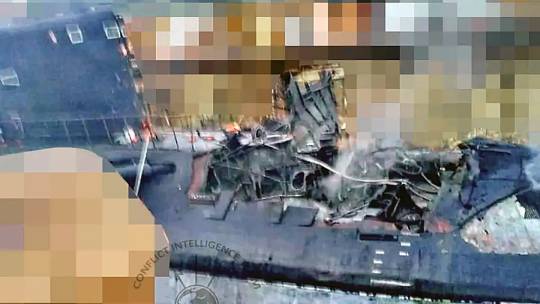
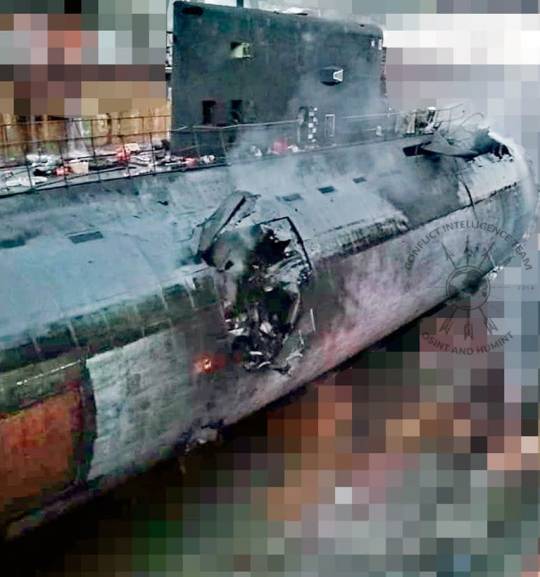
Russian Submarine Destroyed
The significant damage sustained by a Russian Navy Kilo class diesel-electric attack submarine after a Ukrainian cruise missile strike last week. The Kilo class boat, together with a Ropucha class landing ship, had been in dry dock in the Black Sea port of Sevastopol, in Russian-occupied Crimea, when it came under attack in the early hour of September 13.
The submarine in question is the Rostov-on-Don (B-237), an Improved Kilo boat, from the Project 636.3 class, which is capable of launching Kalibr land attack cruise missiles, of the type widely used against targets in Ukraine. This submarine entered service in 2014 and is one of four of its type with the Black Sea Fleet.
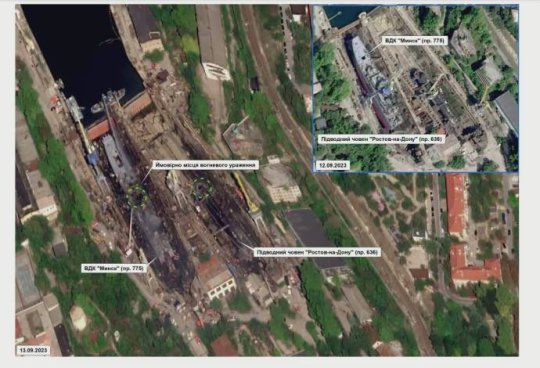
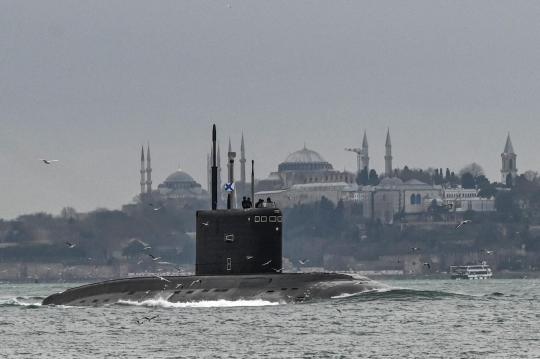
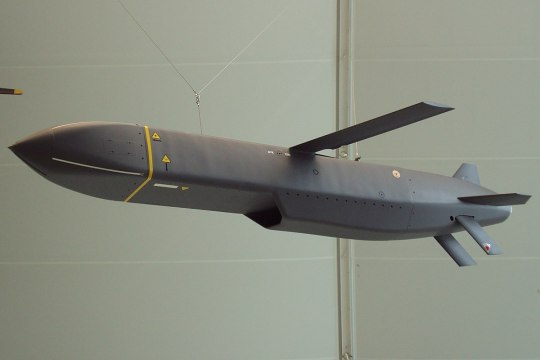
#ukraine#russia#russian war on ukraine#crimea#Black Sea port of Sevastopol#submarine#russian submarine destroyed#Russian Navy Kilo class diesel-electric attack submarine#Rostov-on-Don (B-237)#cruise missile strike#storm shadow#war#world at war#weapons#battle#fighting#combat
44 notes
·
View notes
Text
The Subnautica of other fears
Subnautica is a game infamous for it's almost all ocean planet, underwater worldbuilding, and deep sea gameplay. It's also the bane of all thalassaphobia peeps.
So here's the subnautica of other phobias
Claustrophobia Fear of Tight/Cramped Spaces - The Forest Series : After a plane crash leaves you stranded in a strange forests, something increasingly becomes... wrong. The caves around don't help.
Scopophobia Fear of being watched or the center of attention - Brighter Day : A weirdcore horror game where something is definitely watching you and definitely following you.
Entomophobia/Arachnophobia - Grounded : You play a group of kids who are stuck in a "honey I shrunk the kids" incident. They are forced to venture across their yard, and survive the various common insects around.
Megalophobia Fear of very very very big things - The Utility Room : An experience. More of an experience then a game and fever dreamish, worth it, and mysterious all the way. It's almost as if the universe accidentally left one strange dev room behind.
Nyctophobia Fear of darkness - Amnesia: The Bunker (from the Amnesia series) : It's a first-person survival horror. You play a French man trapped in a bunker during WW1, while being hunted by something inside its darkness.
Autophobia Fear of being/feeling alone - Firewatch : You work in a national park in order to watch out for fires. Traveling across the Wyoming wilderness takes a complicated turn.
Hemophobia Fear of blood or bleeding - Iron Lung : What awaits you in the deep of a strange moon. Trapped in a submarine you have no choice but to find out.
Amaxophobia Fear of car accidents or being run over - Decimate Drive : After freeing yourself from a kidnapping, the world you wake up to is full of hostile cars.
Final Boss Games:
Lethal Company

Fun with friends :D
Genre: Indie Comedy Horror
Takes place on alien planets in outerspace
It's multiplayer, and very fun, but as soon as it hits the fan the sound design works hard to immerse you in the sudden loneliness. The games sound design is one the major players of Lethal Company's fear. As soon as a friend walks away the proximity chat teaches you just how separated you now are.
Before you know it you have had something unfriendly following behind you, and finally finding the silhouette of a friend in the dark you are betrayed by the creatures of the Lethal Company universe.
Fear of Darkness
Fear of Loneliness
Fear of Being Watched
Fear of Outerspace
The Metro Series

Genre: Survival Horror Shooter
You play the beautiful and amazing Artyom Chynornyj in the post-apocalyptic world of Metro. Developed by Ukrainians and based off the Russian book series + Polish fanon writing community.
The world of Metro is unfair and unforgiving, full of mutated creatures, and the leftover souls that the destruction of humanity left in it's wake. Crawl across the underground of Russian cities, or panic across the even more dangerous world of the destroyed above.
Fear of Darkness
Fear of Wild Animals
Fear of Deep Water
Fear of Ghost/The Supernatural
Fear of Insects/Spider
Fear of Heights
Fear of Dead Bodies
Fear of the Cold
No Man's Sky
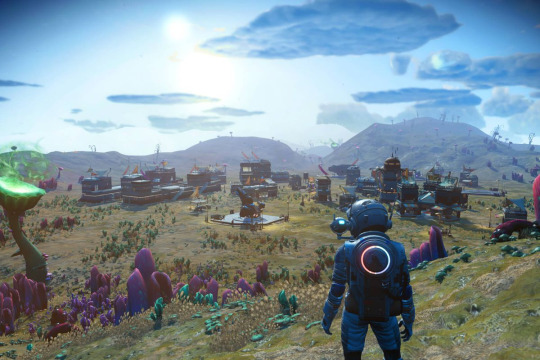
The scariest game I've ever played. I don't know why, but this game freaks me out. I know the picture I chose was harmless, but I did that on purpose.
This game is beautiful, but don't let that fool ya. This world will leave you no hesitation lost in the unpredictable randomly generated horrors of space. From planet that are all water, to colossus creatures you see for only a split second, to the infinite colorless expanse of space.
Megalphobes and astrophobes, this is your subnautica
Fear of Outerspace
Fear of Darkness
Fear of Cramped Spaces
Fear of the Unknown
Fear of Very Very Very Big Things
Fear of Deep Water
Fear of Loneliness
Fear of Caves
Fear of the Supernatural
165 notes
·
View notes
Note
Did you see that youtuber RealLifeLore's latest video, 'Why NATO's Biggest Weakness is Scotland'? It starts out as a pretty fair retelling of Scottish Independence's recent history and then quickly turns into a huge hit piece on the idea of Scottish Independence, claiming that doing so would lead to NATO losing it's edge in the North Atlantic, and letting Russia encroach.
Normally I'd just brush this off but this guy has like 7 million subscribers. idk it's just disheartening to see from someone w such a huge following.
Hey, just watched it - thanks for flagging it in. I almost want to make a video in response!
I'm going to start by saying I don't like this video and I don't like most videos done in this infographic style. I think the fancy graphics often help mask how disjointed the video actually is.
The video starts off strong with a retelling of the political situation of the UK. Scottish referendum in 2014, Brexit etc. It's also a good summary of why Scottish independence is a threat to the UK with regards to Oil fields and the like.
The problem is that around the halfway mark the video descends into a complete reductive mess with wild assumptions portrayed as likely outcomes.
For a start, the assumption that Scotland would copy Ireland and maintain military neutrality. Most people in Scotland passively or actively support membership of NATO, even unionists who hate the idea of Scottish independence would want an independent Scotland to be in NATO.
In Scotland we're well aware of our strategic position in the North Atlantic. The video assumes that Scotland will 'pick up our ball and go home' rather than work with strategic partners. I can't imagine a world where it would be in Scotland's interests to allow Russian nuclear submarines into the North Atlantic.
The video also gets more than a few things wrong. Oil and Gas fields are marked incorrectly. Faslane Naval Base is not located in a 'sparsely, remote area' - it is 30 minutes from our largest population centre. The US Naval Bases in his graphic are marked as being in Newfoundland and Labrador in Canada. There's also no mention of the strategic position of the Faroe islands which is conveniently left out for some reason.
I think the creator was struggling to fill space and needed more graphics to draw on screen. I think that's why he starts talking about the Catholic/Protestant demographic split in Northern Ireland.
I enjoyed the bit about Trans-Atlantic, Cross-Border Dataflows - that's something I know a fair but about! It should have been its own video because it's actually super interesting.
However, when it's tacked onto to a point about Scotland allowing Russian subs to enter the North Atlantic so they can start destroying the cables - it stretches the video into an over-dramatisation of an absurd outcome.
I don't know much about the creator of the video - but I'm getting a whiff of arm-chair general with some slight masturbatory inclinations towards a full-scale global conflict. At the end, it gets to the point where he draws a battle-plan for Russian submarines coming from Murmansk and says Scottish independence will dramatically increase the likelihood of the event.
I hate to say it, but it's a very 'American who likes to think they know a lot about geopolitics' video.
369 notes
·
View notes
Note
hypothetically, lets assume Putin does decide things are beyond salvaging and to let the nukes fly and no one in the entire chain of command decides to stop him. The button get pushed so to speak and... nothing happens. Turns out even Russia's nuclear program is a victim of corruption and now Russia has not even that as a tool or weapon.
Or worse they do fire off but all either blow up in the silos or on Russian territory and otherwise never make it out of Russian air space.
What sort of international response would you expect to that?
Those are two significantly different examples.
If Russian nuclear silos explode, irradiating the surrounding areas, that becomes a significant humanitarian catastrophe that requires international intervention. After all, nuclear fallout is carried downwind, and depending on the Russian nuclear facilities that experience catastrophic failure, this means a significant number of IDP's and medical assistance that Russia is ill-equipped to provide support for. In that sense, there are exclusions zones, refugee camps, and other factors that dominate international concern.
However, in the event that the Russians deploy a nuclear response that ends up being a dud, I imagine that the Russian Federation is expelled from most supranational governmental forums. No country wants the nuclear taboo broken, and so even China would be hard-pressed to deny Russia's expulsion from the Security Council, and Orban couldn't justify Russia's expulsion from something like the OPCW or any European security arrangement. You'd probably see the confiscation of Russian foreign sovereign assets, crippling sanctions, and the effort undertaken to destroy Russian nuclear weapon infrastructure, including nuclear submarines, silos, and the forcible grounding of nuclear-capable strategic bombers.
Thanks for the question, Anon.
SomethingLikeALawyer, Hand of the King
23 notes
·
View notes
Text

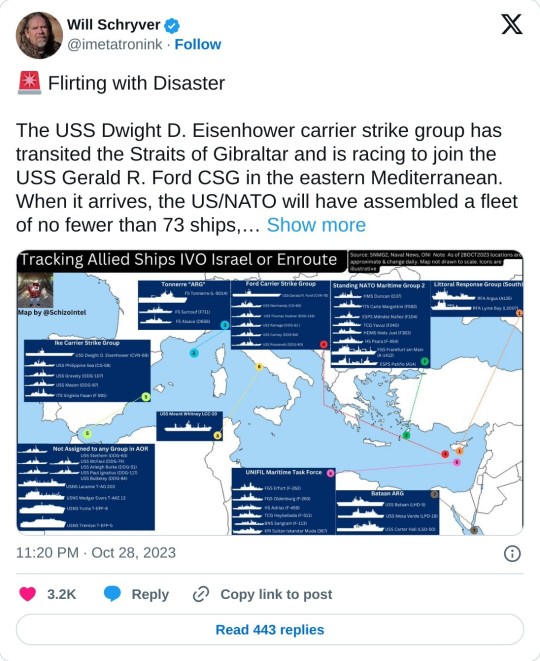
The USS Dwight D. Eisenhower carrier strike group has transited the Straits of Gibraltar and is racing to join the USS Gerald R. Ford CSG in the eastern Mediterranean. When it arrives, the US/NATO will have assembled a fleet of no fewer than 73 ships, including the 30+ NATO ships taking part in the Dynamic Mariner exercises off the coast of Italy. This is, I believe, the largest US/NATO assemblage of warships in at least the past half-century.
In addition to the many support ships, the following major warships are present:
— 2 US supercarriers (Ford and Eisenhower)
— 2 VTOL aircraft carriers (USS Bataan and ITS Cavour)
— 2 Guided-missile cruisers
— 11 Guided-missile destroyers
— Several frigates
There are also undoubtedly a large number of submarines present, each one of which packs substantial stand-off firepower. I will once again emphasize that this fleet is not being assembled in order to assist the Israelis in their ongoing project to destroy HAMAS and the 2.5 million inhabitants of Gaza. In my view, this powerful fleet can have only one possible mission: to eradicate all Russian, Iranian, and Iranian-affiliated military power currently present in Syria, Lebanon, and Iraq. Needless to say, these are extremely portentous developments that entail great risk of plunging the world into the biggest and most destructive war in human history.
#The crumbling empire has entered its cornered animal phase.#As I said yesterday.#Their arrogance is going to be the death of us here and abroad.#I've been sitting here for 20 minutes trying to figure out if I want to hit post now or not.
25 notes
·
View notes
Text
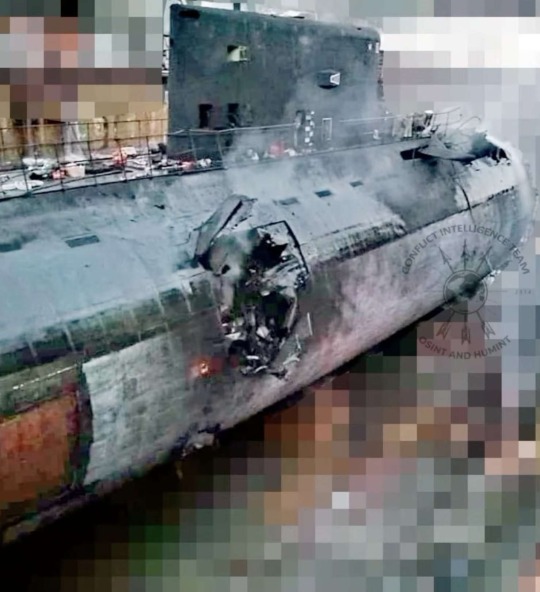

The remains of the Russian Kilo-class diesel electric attack submarine Rostov na Donu, destroyed by a Storm Shadow missile launched by Ukrainian forces while the boat was in dry dock.
27 notes
·
View notes
Text

For the first time ever Ukraine destroyed a Russian submarine in Sevastopol on September 13, 2023: The B-237 Rostov-on-Don diesel-electric submarine is one of the newest submarines in the Russian Federation, having been launched only in 2014. The boat is worth more than $300 million and can use Kalibr cruise missiles from part of the 533-mm bow torpedo tubes...
P.S. One of the main conclusions from the analysis of Ukraine's defense experience: Eastern European countries need their own strong armed forces...and long range heavy weapons...
#Ukraine#russian defeat#ukrainian air force#naval history#aviation history#ukrainian independence war
23 notes
·
View notes
Text
Bakhmut, Ukrainian forces from the 45th Artillery Brigade managed to destroy a Russian naval weapons system, scoring several hits on a truck-mounted RBU-6000 anti submarine rocket launcher, causing the improvised MRL to catastrophically cook off.
9 notes
·
View notes
Text
Thoughts while I’m rewatching dead reckoning-roughly the first 2 hours
This movie is just so visually pleasing and engaging. I want to eat it. The shot from beneath the submarine looking up at the ice?? Fucking gorgeous.
I know logistically why they made the call but the Russian submersible crew speaking Russian accented English will always be funny to me. Also reminds me of the doctor who episode in 11’s run with the Russian submarine. It was Clara’s era. Anyway, they also do a great job of making us immediately empathize with the crew just based on their fear and confusion in the face of the enemy. It helps that that enemy is the same one the protagonist is facing, but it’s also just great acting on the crew’s part in a relatively short period. The existential horror of being trapped in a submarine of all things with a murderous ai is genuinely chilling.
I really love how old they let Ethan be in this movie. With most action franchises with an aging protagonist they refuse to alter the character, instead sticking to what’s been proven to work and MI has always done the opposite of that and it’s just so good. All his interactions with the new IMF agent just speak to his experience, and how many people he’s seen just like this guy, inexperienced and thrown in over their heads, not make it out. His fucking sadness after he welcomes the delivery guy to the IMF and he leaves is so good. TC your micro expressions will never not destroy me. Mildly controversial opinion but I didn’t think Grace and Ethan’s chemistry was in any way romantic or paternal, I think they’re going to be really great friends. Also “we live and die in the shadows for those we hold close and those we never meet” is both super corny and such a perfect representation of Ethan’s character it makes me screech.
I have complicated feelings about Ethan’s backstory retcon which I won’t go into but I do think they definitely made the right choice not doing the deaging thing for the flashback.
One of these days I’m going to write something exclusively about everything I love about Ilsa, but that day is not today. For now, even looking at pictures of her makes me a bit emotional. Rebecca Ferguson you have changed me, body and soul. Also that eyepatch being because she can’t wink is so funny. No ones doing it like her.
Ethan briefly gives his horse pats and I liked it. I feel like he’s a horse girl. In his heart. I like that none of the horses die in this sequence. I know it’s unrealistic but this is fucking mission impossible we’re talking about it’s not a docuseries and it would make me sad.
Ilsa’s costuming in this movie is so fucking good. The looseness and lightness of everything she wears really complements the economy of motion that Ferguson does so well.
Indira Varma win!!
In retrospect watching Ethan move so unimpeded into a meeting of some of the highest ranking us intelligence officers is such a great look at him as a character for newcomers to the franchise. He’s such a spy in this, it’s so good. It’s just a great standalone movie.
Kitttridge!!!! I hate this bitch, and I’m so glad he’s here.
In every interaction with kittridge ethan is such a bitch, I love him so much.
“It’s my job to use you. Just like it’s your job to be of use” is fucking heavy. The decades of being of use, and having the shit beaten out of him and his loved ones leaving or dying so he can serve, the absolute mindfuck of his loyalty to the IMF and to a greater extent to keeping the world safe and lack of regard for himself. I don’t have coherent words about this, but it’s great characterization and I’m so sad about it.
I love how much of an ensemble movie this is, by the way.
“The man himself is expendable” Briggs I am going to break your legs. He is my special guy.
I love how much this is a manifestation of Benji’s monologue in MI 3 about the Antigod. It was silly but he was not wrong.
Also Benji’s outfits and Luther’s hat… really good.
I cannot wait for them to tell us what the connection between Ethan and Briggs is because it’s SO weird
Benji and Luther’s relationship being given a chance to evolve is really good, it was a side of their team that had felt underdeveloped and it works really well here. Them not letting Ethan know gives us insight into some of the troubleshooting on missions that he just can’t cover because of his skillset and it’s really good. Also banter 👌👌
The return of his sleight of hand is gorgeous. “Putpocket” is horrible and super silly.
The entire scene where Benji is interrogated by the bomb is so good, Simon pegg is as always excellent, being forced to admit that he fears death, that he loves his friends more than anything else, all without any stakes, it’s just so clearly meant to humiliate and tear him into bits and it works and then he goes back on the job because all the things he said are true and now the machine Knows.
Pom is flawless in this movie. As a character, she’s delightfully unhinged. As someone who’s attracted to women, it’s. It’s nice for me. But also genuinely from a narrative standpoint it would be so easy for her to be extraneous but her presence is so strong it just carries. Her monster truck and combat boots and small ponytail compel me deeply.
Running scene running scene running scene running scene
I fucking love his little lawyer outfit.
That car chase scene is maybe my favorite in the series. You can see McQ and TC’s commitment to stunts as a carrier for narrative and character, it’s visually stunningly, it has Paris who I’m obsessed with, everything Ethan does is just impeccable and Grace plays the perfect foil. His deep discomfort with not being the one who’s driving, repeatedly reassuring her after the crash, his getaway driving skills, his little looks to Briggs (again what the fuck is up there), wanting to be the protector and being deeply embarrassed with the fiat. Not actually knowing how to drive it is such a great comedy moment and also blue screening when he can’t do it immediately. That 5 minutes of him just being so embarrassed and frustrated with himself. I want to eat it. It’s so good. And then of course he’s doing stunt driving in it and that’s also glorious. Grace going in circles in the fiat is so fucking funny. Also Ethan’s the worst fucking backseat driver it’s amazing. He is losing his mind. He is actually scrunching up in the seat, which he can do even in a fiat because he is tiny. It’s just quality television.
I knew they would do the train thing the second I saw the tracks and I just hate it. It’s really good objectively but I hate it every time.
Him having to just carry this wheel around for a solid 5 minutes-it’s his new rock. It’s his sadness object and he’s holding onto it forever.
Ethan’s fucking despair every time he sees his friends during a mission for the first time because he knows they might be hurt, the fact that that is consistently his first thought beyond relief or gratitude makes me insane.
Also the tacit acknowledgement that Ethan has just been working his way through the mitsopolis family is so fucking funny. It’s also fairly uncomfortable for Alanna because he seems substantially less into it than he was with max, but I digress.
I cannot wait for his hair to be longer, I think somewhere between MI 1 and 2 is the ideal length, but I hold a deep fear of the potential bowl cut.
The repeating pattern of all of Ethan’s friends withholding information from him is really interesting.
We all know Ethan’s whole shtick with you’ve gotta get out of here it’s dangerous I can’t protect you is a testament to how much he loves them but it’s also just..so much a trauma response. Every time he does it you can see him panicking and trying to change an eventuality he can feel creeping behind his shoulder.
The quiet moments between Ilsa and Ethan in Venice are really good. Their initial reveling in being able to wordlessly communicate and talking to each other in the context of work and danger has given way to this very comfortable worn in curiosity about each other, and a willingness to give of themselves to satisfy each others curiosity. It feels like they’ve sort of grown up a bit in their relationships with other people by having their relationship with each other and it’s just really cool.
Pom’s outfit with the mask at the party in Venice is so fucking good. I tend to try not to linger on attraction to female characters because it feels more creepy than it does with male characters, likely due to some of my internalized nonsense, but she really does feel so much for the queer gaze. She also has a sword. I’m just really into all of it.
Some of the things Vanessa Kirby said about learning about projecting power make so much sense watching her move, there’s this artificiality and stasis to her that feels innately threatening.
The loop back from Gabriel’s religious overtones and the themes of sin in the first mission impossible movie is fascinating.
I love it when he vaults over railings and down floors. The easiness of it, it’s just good to look at.
Getting closer to Ilsa’s death scene is complicated. I understand why it had to be someone, and why that someone should be her. I understand that Rebeca Ferguson was done with the character. I’m just sad because I like her, and I’ve managed to separate that feeling from a reflexive anger at the narrative choices that were made, which I admit I sometimes have an issue with. Him finding her body and just sitting and breathing and looking at her is fucking brutal. Also the entity using Benji’s voice to misdirect him is A Lot.
The brutality of that back alley fight scene is such a good establishing look at Paris’s fighting style and a great character moment for both of them. We get her first moment of fallibility and we see what he’s made of when his back is literally against the wall.
I know either rogue nation or ghost protocol is supposed to be Ethan’s fever dream nightmare scenario, but dead reckoning feels so much more like that to me. An enemy he can’t hit, who has a better chance of predicting his insanity, who uses an almost literal ghost from his past to kill the people he’s built himself around in the present. He also is forced to jump off a cliff and be a passenger in a car. It’s all not coming up Ethan in this movie is what I’m saying.
For the rest of the movie we don’t see a lot of his grief, mostly his anger. Don’t get me wrong, the bit we get is very good and did make me cry a bit, and I know how much they’re packing into one movie, but I hope we get more of it in the next film. Anything else seems like a bit of a disservice to Ilsa’s character.
It bothers me every time that Grace doesn’t have contacts when she’s playing the white widow. She sits almost directly opposite her brother, they make full eye contact a lot.
Ethan’s “your life will always matter more to me than my own.” And Grace’s “you don’t even know me” and Ethan’s “what difference does that make.” Hm. I am having complex feelings, consisting mostly of distress. Her looking at Benji and Luther, and them both acknowledging the weight of Ethan saying that and confirming it’s the same for them, AUGH.
What the fuck is going on with the cryogenic tube/coffin Gabriel was in on the train?? I know he was probably using the mask to communicate with the entity and he had to do that convertly but the whole thing is just weird.
I’m gonna pick this up when it’s not about to be a Monday. Tune in shortly for a continuation of me losing my mind over some action movies, I guess.
10 notes
·
View notes
Text
A Ukrainian airstrike damaged a ruzzian landing ship in a Crimean port of Feodosia.
It's amazing how ruzzia keeps losing ships to a country that doesn't have navy. Fingers crossed that more of them will join ruzzian fleet of submarines, proudly led by its flagship Moskva.
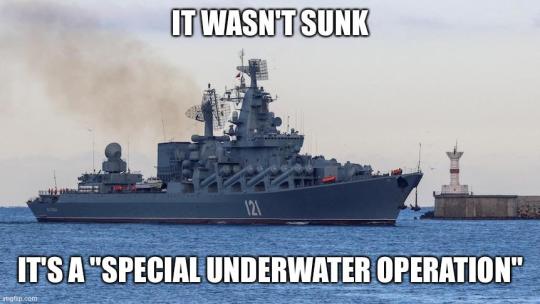
9 notes
·
View notes
Text
A Russian patrol ship has been destroyed off the coast of Crimea after being attacked by Ukrainian sea drones in another blow to Russia’s Black Sea fleet.
The ship – the £51million-valued Sergey Kotov, a Project 22160 patrol vessel – was struck by several of Ukraine’s Magura V5 naval drones, according to Ukrainian military intelligence service Gur.
The service said the Sergey Kotov “suffered damage to the stern, right and left sides” before it sank near the Kerch Strait in the early hours of Tuesday morning.
A Gur spokesperson, Andriy Yusov, said: “As for the crew, the details are being clarified – there are dead and wounded, but it is likely that some of the crew managed to evacuate.”
In a statement on social media, Ukraine’s Ministry of Defence said: “+1 Russian ship was upgraded to a submarine.
“Tonight, military intelligence’s special unit, ‘Group 13’, attacked the patrol ship of the Russian Black Sea fleet… Nice start of the day! Great job, warriors.”
Ukrainian Navy spokesperson Dmytro Pletenchuk said “right now, this ship is on the seabed” and claimed a helicopter may have sunk alongside it.
While Ukrainian intelligence official told Radio Svoboda that Russian sailors on board the vessel had been injured or killed.
6 notes
·
View notes
Text
Ultimate Doctor Who Poll Round 1 - Matchup 11
Episode Summaries under the cut
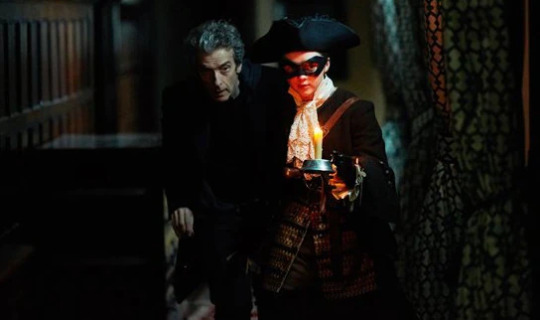
122: The Woman Who Lived - Season 9, Episode 6: The Doctor visits the immortal Ashildr, who now goes by Lady Me, having forgotten her original name over the centuries. She still has the limits of human memory, so she has a massive library of diaries. She begs the Doctor to take her with him, but he refuses. She does convince him to help her with a robbery she's staging, an alien jewel from a rich couple. Her and an alien accomplice of hers plan to use the jewel to open a portal so they can escape from Earth. Once obtained, the alien opens the portal to allow his species to invade the Earth. While initially dismissive of normal human life compared to her own, Me finds that she still cares when the aliens begin their attack and begs for the Doctors help. He closes the portal and Me decides to remain on Earth, to look after the people that the Doctor abandons.
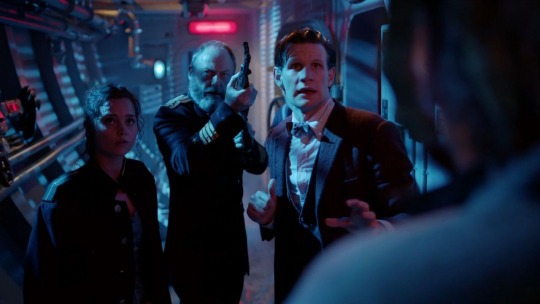
135: Cold War - Season 7B, Episode 3: The Doctor and Clara land on a Russian submarine during the Cold War, where they have unearthed an Ice Warrior, Grand Marshall Skaldak that has been lodged in the ice for 5,000 years. One of the Russian soldiers attacks Skaldak, who then seeks revenge. The Doctor sends Clara to negotiate with him, as she is the only non-soldier on board, but she finds that Skaldak has left his armor and is loose aboard the ship. He dissects several soldiers to learn more about human anatomy, as well as reading their minds to learn about the Cold War and the concept of mutual assured destruction. He learns that there are no more Ice Warriors on their native planet of Mars, and does not believe the Doctor when he says that the Ice Warriors have many ships outside of our solar system. Believing himself to be the last Ice Warrior, he resigns to destroy the Earth by launching a Russian nuclear missile and plunging the Earth into nuclear war. The Doctor threatens to destroy the whole submarine, killing them all, but saving the Earth, and Skaldek relents. An Ice Warrior ship finally arrives, having received Skaldek's distress signal. The Doctor disarms the missiles and he and Clara take off in the TARDIS.
#doctor who#ultimate doctor who poll#my post#polls#11th doctor#clara oswald#12th doctor#ashildr#lady me#matt smith#jenna coleman#peter capaldi#maisie williams#the woman who lived#cold war
18 notes
·
View notes
Text
Trin Reviews: Mission: Impossible - Dead Reckoning Part I
This review contains spoilers for Mission: Impossible – Dead Reckoning Part I
-----
Amidst the memery and hyper of Barbenheimer, Tom Cruise’s latest attempt at tempting fate and spiting god appears to have slipped by audiences – kinda like how Ethan Hunt slipped by his pursuers in the movie though he probably intended it.
As someone who hasn’t even watched every movie in the franchise (never saw M:I 1 or 2; vaguely remembers 3-6), some easter eggs and themes are going to be lost on me, so do forgive me. I also rate Fallout to be the best Mission: Impossible before going into this one. Has this entry changed my ranking?
The movie opens with a tense scene in a Russian submarine, the Sevastopol, in a sea-trial gone wrong that sets the movie in motion. Ethan is then sent to rescue Ilsa from mercenaries sent by his boss. In true Mission: Impossible fashion, the fight isn’t easy. The power couple has to shoot their way out (I agree with Hideo Kojima, Rebecca Ferguson with an eye patch, sniping... sweats) of a sandstorm and fake Ilsa’s death. Maybe because I’ve seen the trails too many times but the camera work didn’t feel as impressive to me in this scene as I thought it would from the trailers. Or maybe it’s the score? I don’t know.
I was originally going to continue on scene by scene but then it wouldn’t really be a review, would it? It’d be a text based reaction commentary.
So anyway, the movie was supremely entertaining. My partner who has never watched a single Mission: Impossible, was very happy with the movie and had the urge to watch every preceding movie after we came out of the theatre.
The action was fantastic. A lot of hype and attention was given to Tom Cruise biking off a cliff and parachuting down but to me, the more impressive stunt was the fight atop the Orient Express, where they had built a train to shoot on and eventually wreck because they couldn’t find a train that they could also destroy.
Tom Cruise and Esai Morales (and his stunt person, I guess?) fighting on a moving train was one of the tensest and most exhilarating fight sequence I’ve seen. One wrong move and the whole thing could’ve been over. Then there was the part where they had to fight on their bellies while the train was going through a tunnel. God. What a show. I’m really interested in knowing how the whole sequence was filmed.
A fight that I was not a huge fan of was between Rebecca Ferguson (Ilsa) and Esai Morales (Gabriel). Ilsa entered the fight with a sword while Gabriel had a knife. In theory, as long as Ilsa kept her distance, she had the advantage. BUT SHE KEPT CLOSING THE DISTANCE, WHERE SHE HAD EVERY DISADVANTAGE. That ticked me off so badly, and made me so anxious, especially since Ilsa is my favourite MI girl. She had Gabriel locked with her legs at one point, which he obviously used as an opportunity to stab her in the thigh...
Needless to say, I was quite upset with Ilsa’s death (they faked her death once, they can do it again. C’mon McQ) especially with her role in this movie. She felt less like a character and more like an NPC team member whose role is to get the MC to the next plot point.
Haley Atwell was a welcomed addition to the crew, if only it wasn’t so obvious she would be replacing Rebecca Ferguson. Ethan being given a choice on whether Grace or Ilsa should die may seem weird, and it kinda is, given that Ethan and Ilsa has been through so much together. Even if not romantic partners, Ilsa should’ve been the obvious choice for Ethan to save over Grace. But I think him not being able to choose or refusing to choose is very in character for Ethan. He will have his cake and eat it too, or die trying.
Anyways, back to Grace. The chemistry between Ethan and Grace is fantastic, and I think it’s carried by Haley Atwell’s charm. She definitely showed that she has the potential to be a stellar field agent but not one yet. Someone put it well, she’s well versed in the criminal world but terrible in the spy world. I think she just needs some training and polishing, which I think she will get with the implication of her joining the IMF.
Which leads me to the comedy in this movie. I think this is the funniest Mission movie of the ones I can remember. The jokes are not the quippy Marvel fare, which has gotten grating over the years with almost every character having a one-liner. The comedy in this one is more situational, more like 2 close friends giving each other shit and being themselves, and of course lamp-shading how absurd the series has gotten. (What does the International Monetary Fund got to do with this?)
I think almost every joke landed for me or at least got a chuckle out of me. And it didn’t detract from the emotional moments while adding some levity to moments that didn’t need to be as serious where other franchises might’ve taken very seriously.
I have tried to find a way to work in parts about Vanessa Kirby and Pom Klementieff in this review but failed to because their characters were fairly minor and not very relevant to the central core of the plot. They’re not irrelevant, just minor.
Nothing much to say about Vanessa Kirby’s White Widow except the way looks she gives throughout the movie makes me feel things. Such a powerful and commanding presence whenever her character is relevant to the scene.
Pom Klementieff’s Paris was fun. I’m glad she survived and hope to see her in Part II. Her enjoying the thrill of the chase and fight with Ethan in a tight alley makes me think she could be a very good Harley Quinn. Maybe an alternate version since Margot Robbie currently owns that role?
I thought the story was a little weak compared to Fallout, but the latter had set a high bar for Mission so it’s not a failure on Dead Reckoning Part I to not meet that bar. It was a little confusing who the players are, which side they’re on etc, but perhaps that is the point?
In this crazy crazy world where facts almost don’t matter, how can you know who is good and who is bad? Who is right and who is wrong? The movie has pointed out that Ethan has gone rogue frequently to save the world and that he has always been right to do so. But what if he’s wrong once? What will the consequences be when Ethan thinks he’s doing what he’s doing for the greater good but is actually becoming the very villain he has tried to stop time and time again? ...That might be a good potential movie idea. TC, McQ, gimme a call.
There’s also a question of what is the Entity’s end goal? What does it want? Besides killing Ethan, of course.
I hope these question can be answered in the next movie, along with a proper emotional payoff for Ilsa’s death (SHE BETTER NOT BE DEAD)
8.5/10
#movie#movies#mission impossible#dead reckoning spoilers#dead reckoning part 1#dead reckoning part one#movie review#tom cruise#vanessa kirby#pom klementieff#rebecca ferguson#haley atwell#simon pegg#ving rhames#vanessa kirby glower at me please
12 notes
·
View notes
Text
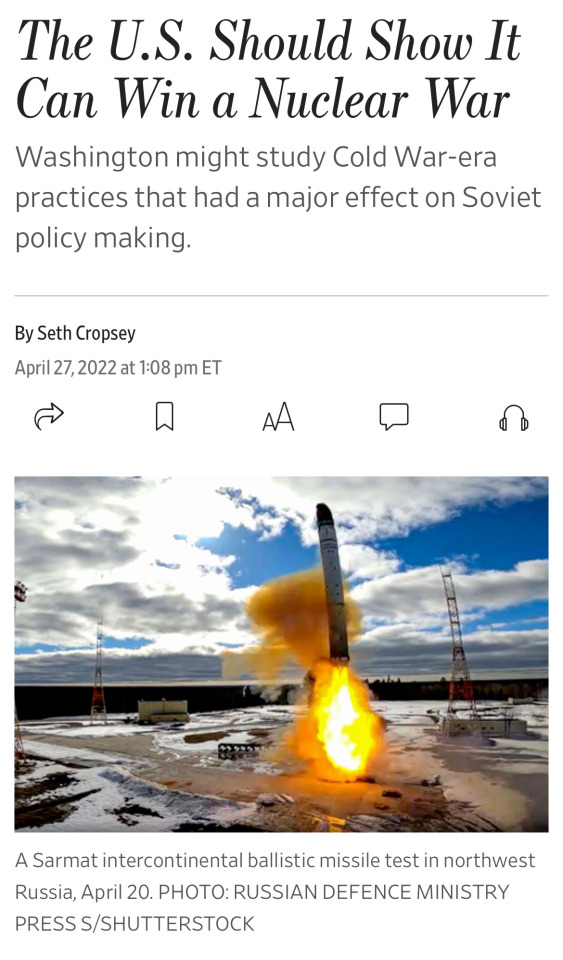
“The reality is that unless the U.S. prepares to win a nuclear war, it risks losing one. Robert C. O’Brien, a former White House national security adviser, proposed a series of conventional responses, which are necessary but not sufficient to deter Russian nuclear escalation. Developing a coherent American strategy requires understanding why Russia threatens to use nuclear weapons and how the U.S. can recalibrate its strategic logic for a nuclear environment.
Russia’s war is being fought on two levels. At the military level, the battlefields have been restricted to Ukrainian and, in a handful of instances, Russian territory. But the conflict is also a war against NATO, given Ukraine’s position as an applicant, NATO’s military support for Ukraine, and NATO’s willingness to embargo Russian products and cut off Russian energy.
(…)
If Russia’s military situation appears dire, Mr. Putin has a dual incentive to use nuclear weapons. This is consistent with publicly stated Russian military doctrine. A nuclear attack would present Ukraine with the same choice Japan faced in 1945: surrender or be annihilated. Ukraine may not break. The haunting images from Bucha, Irpin and elsewhere demonstrate Russia’s true intentions. A Russian victory would lead to mass killings, deportation, rape and other atrocities. The Ukrainian choice won’t be between death and survival, but rather armed resistance and unarmed extermination.
Nuclear use would require NATO to respond. But a nuclear response could trigger retaliation, dragging Russia and NATO up the escalation ladder to a wider nuclear confrontation.
Perhaps a conventional response to a Russian nuclear attack would be sufficient. What if the U.S. and its allies destroyed Russian military units deployed to the Black Sea, Syria and Libya; cut all oil pipelines to Russia, and used their economic clout to threaten China, and other states conducting business with Russia, with an embargo?
Each of these steps is necessary. But Russia’s goal in going nuclear is to knock NATO out of the war. The Kremlin believes its resolve outstrips that of the U.S. A conventional American response would confirm this—and create incentives for additional Russian nuclear use.
The Kremlin is resurrecting the arcane art of nuclear war fighting. These weapons have a military purpose. They also have a political one. The U.S. should reframe its thinking in kind.
(…)
Most critically, if Russia used a nuclear weapon, the U.S. could use its naval power to hunt down and destroy a Russian nuclear-powered ballistic-missile submarine, the backbone of Russian second-strike capability. Late in the Cold War the U.S. Navy threatened to do exactly that, pressuring the Soviet Union’s nuclear bastions, the protected littoral areas from which Soviet subs aimed to operate with safety. In a series of naval exercises during the Reagan administration, the U.S. and its allies simulated assaulting the Sea of Okhotsk and Barents Sea bastions, while U.S. submarines probed and shadowed Soviet boats in both areas. Post-Cold War evidence reveals that American naval pressure had a major impact on Soviet policy making: Despite Moscow’s priority of armaments over all other state needs, the U.S. showed it would still be able to fight and win a nuclear war.
The ability to win is the key. By arming surface ships with tactical nuclear weapons as well as attacking a nuclear-missile sub and thus reducing Russian second-strike ability, the U.S. undermines Russia’s ability to fight a nuclear war. The Soviets were deeply afraid of a pre-emptive strike by NATO. That fear has morphed, under Mr. Putin’s regime, into a fixation on the “color revolutions,” pro-democracy uprisings in former Soviet republics. Jeopardizing Russian second-strike capability would tangibly raise the military stakes. Mr. Putin could no longer unleash his nuclear arsenal with impunity. Instead, he would need to reckon with the possibility that NATO could decapitate the Kremlin—yes, suffering casualties in the process, but still decapitate it.
A nuclear war should never be fought. But the Kremlin seems willing to fight one, at least a limited one. If the U.S. demonstrates it is unwilling to do so, the chance that the Kremlin will use nuclear weapons becomes dangerously real.”
4 notes
·
View notes
Text
NEAR SOCORRO, New Mexico—There isn’t much left on the oppressive white sands of the New Mexico desert to mark that the nuclear age began here. On a wind-swept patch of land so barren that Spanish conquistadors, hailing from the sunbaked hellscape of Extremadura, once called the trek “the journey of death,” a lava-rock obelisk is the only thing marking the nearly 25-kiloton Trinity explosion that ignited the nuclear age.
“We knew the world would not be the same,” J. Robert Oppenheimer remembered in an interview for a television documentary in 1965. The blinding flash of the detonation—which was only revealed to the public later—was visible for almost 200 miles. The wind blew much of the nuclear fallout toward sparsely inhabited communities in the New Mexico desert. The only reason the Trinity test did not irradiate 100,000 people was because of a shift in the wind: One wrong gust, and radioactive dust would have blanketed Albuquerque and Santa Fe.
The United States wasn’t just building a bomb. The Manhattan Project employed nearly 1 percent of the American civilian workforce, toiling everywhere from Oak Ridge, Tenn., to the Pacific Northwest to the sandy wastes of New Mexico. Most had no idea what they were helping to build.
“This is not a little tiny project. This is not even a weapons project in the traditional sense,” said Alex Wellerstein, a historian of science at the Stevens Institute of Technology and an expert on nuclear secrecy. “This is building an entirely new industry from scratch in two and a half years.”
Nearly eight decades later, that industry is falling into disrepair. Over half of America’s nuclear infrastructure is more than four decades old, and a quarter of it dates back to the Manhattan Project itself, according to the Pentagon. The United States lost its monopoly on the bomb before the end of 1940s, and nuclear weapons have gotten exponentially more destructive. Russia claims just two “Satan II” intercontinental ballistic missile (ICBM) can destroy the entire east coast of the United States; the U.S.-made Ohio-class submarine, which the U.S. Navy will be phasing out as Columbia-class hulls slip their ways, was originally designed to destroy multiple Soviet cities at once.
The Biden administration insists it is not in an arms race with Russia and China. But the U.S. administration’s more than $1 trillion modernization of the nuclear triad that will see the United States field new fleets of nuclear-capable stealth bombers, intercontinental ballistic missiles, and submarines has split American politics into warring camps. There are progressives who believe the Pentagon is tempting nuclear Armageddon and should dismantle the triad entirely. There are also hawks who believe the United States is too fearful of Russian nuclear saber-rattling.
“Disarmament is not something that’s feasible in the short term,” said Ankit Panda, a senior fellow in the nuclear policy program at the Carnegie Endowment for International Peace, a Washington think tank. “In fact, we might be, for the first time since the end of the Cold War, looking at a world where nuclear weapons begin to increase in great numbers around the world.”
For Oppenheimer and the core team of 250 staff at the site, everything was riding on the Trinity test. They would only have one chance to make sure that history’s deadliest weapon actually worked as advertised.
In the seconds after the “Gadget” bomb dropped from the top of a 100-foot tower to the ground in the New Mexico desert, two circling B-29 Superfortress bombers saw the Sacramento Mountains illuminated with a radiance brighter than daylight. The roar of the shock was felt 100 miles away and the sight of the blast carried even farther; the fireball from the explosion reached seven miles high. And thousands of pieces of trinitite, a mix of quartz rock and feldspar melted into an emerald green glass by the heat of the blast, were scattered along what was then the White Sands Proving Grounds.
Not only were Oppenheimer and his team convinced that the bomb, packed with 13 pounds of plutonium, had worked, but they were also convinced no one was in range of the fallout. The only nearby town was Socorro (an oft-used Spanish word for “help”), 35 miles away.
Tina Cordova is a sixth-generation New Mexican, hailing from a village of nearly 3,000 people an hour’s drive downwind from the Trinity site. It’s a community that has been fighting for decades to get recognition from the United States government about the Trinity test and compensation for millions of dollars—perhaps billions—in medical bills as locals have battled radiation-induced cancers for generations, stemming from the first nuclear test in New Mexico and dozens more above-ground tests in Nevada.
The bomb went off in the middle of a rural community, where many people were getting their water from ditches and cisterns, their meat and dairy from cattle and chicken coops outside. Thousands of people lived within a 50-mile radius of the blast site.
Cordova’s grandmother, who was only a little girl at the time of the Trinity test, was shocked out of bed. Her mother gathered her family up and prayed the rosary. For days, wet bed sheets that had been placed outside to bring a cool breeze inside were covered in layers of ash. People would rinse them off, and then rinse them off again. The heat of the explosion was so intense it burned the hide off of cows in nearby fields, Cordova said.
“It’s absolutely inhumane what we go through here,” said Cordova, who is a radioactive cancer survivor, a disease that has passed through generations of her family. “Dealing with the idea that we were collateral damage to our government’s pursuit of nuclear superiority.”
Cordova and the thousands of New Mexicans seeking restitution for radioactive illnesses and the 1,030 nuclear tests conducted by the United States between 1945 and 1992 form one of the major tentpoles in the American nuclear debate. It has pitted grassroots campaigners, Catholic priests, and dovish politicians who believe the U.S. nuclear arsenal exceeds any reasonable degree of security for a country that can’t or won’t tackle poverty or gun violence against U.S. officials and lawmakers who see nuclear weapons as a deterrent against Russia and China. But big bombs also bring big dollars—into their districts.
The nuclear enterprise is now intermingled in U.S. communities, growing from the skeletal structure of the Manhattan Project. Today, in South Carolina, just miles from the Georgia border, Republican Sen. Lindsey Graham has been pushing for successive U.S. administrations to restart the facility at the Savannah River Site—a onetime prolific producer of weapons-grade plutonium—to convert the existing facility into a production center for commercial nuclear fuel. In Oak Ridge, just 20 miles outside of Knoxville, where Gen. Leslie Groves first ordered a facility built to enrich uranium for the atomic bomb, a large national laboratory still produces uranium-235, one of the two radioactive isotopes produced by the Manhattan Project. And a job at Los Alamos National Laboratory, which Oppenheimer once led, is one of the plushest gigs available in New Mexico, one of America’s poorest states.
The Manhattan Project officially ended after the end of World War II, but it helped establish the United States Atomic Energy Commission, which heralded an era of mass weapons production during the Cold War. The number of U.S. warheads peaked in the 1960s, before the U.S. gradually reduced its stockpile over the following two decades owing to new arms control deals, even as tensions with the Soviet Union escalated. By the time the Berlin Wall fell in 1989, a new question emerged: how to rethink the use and production of nuclear weapons. And the answer to that was nuclear modernization.
“This [nuclear modernization] has been a multi-decade, multi-president process, and in some ways, remarkably bipartisan,” Wellerstein said. “It’s a hugely expensive, multitrillion-dollar program that’s been sort of a juggernaut moving along for the last few decades.”
Across three U.S. Air Force bases in Wyoming, Montana, and North Dakota, the United States has 400 nuclear-tipped Minuteman III intercontinental ballistic missiles on around-the-clock alert (American ICBMs have been on that alert status nonstop for 63 years.). Those Ohio-class submarines that can destroy the capital of any country in the United Nations? They flank the Pacific and Atlantic coasts in Washington and Georgia, their nearly 600-foot, four-deck hulls constructed in Rhode Island and assembled in Groton, Connecticut. The 1950s-era B-52, which is now being flown by the grandchildren and great-grandchildren of its first pilots, will serve until the 2050s.
On paper, that looks like an insurmountable edge. The United States and Russia, combined, have 89 percent of the world’s inventory of nuclear weapons, according to the Federation of American Scientists, though the American stockpile has been drifting slowly downward as it retires about one-third of its outdated arsenal.
China could be catching up. The Pentagon believes that Beijing assembled 400 warheads in just a fraction of the time that it took the United States to build a nuclear arsenal of that size, and if it continues at the same pace for the next dozen years, China could have 1,500 nuclear warheads ready to launch.
“They still refer to China as ‘Red China.’ They still refer to them as godless communists and still think that this is like a Cold War battle between good capitalism and bad communism,” said Jon Wolfsthal, a senior advisor at Global Zero and a former National Security Council advisor during the Obama administration. “The mindset inside the U.S. nuclear security community is very much of the Cold War mentality.”
The Biden administration was nervous. For more than a year, the Ukrainian military had held out against a superior, nuclear-armed Russian foe in the face of overwhelming odds. But last month, with Russia rattling its nuclear sabers so hard the rust almost came off, U.S. officials wanted to calm the tensions.
As National Security Advisor Jake Sullivan approached the stage at one of Washington’s largest disarmament conferences in June, the U.S. administration faced a changed world even from the year before. Russian President Vladimir Putin had suspended participation in the New START accord. Ukraine was warning that Russia had designs to blow up the Zaporizhzhia nuclear power plant, Europe’s largest such facility, on Russian-occupied soil in Ukraine. The Bulletin of the Atomic Scientists had moved the Doomsday Clock to 90 seconds to midnight, the closest to Armageddon it had ever been.
But the U.S. administration insisted it was not in an arms race.
“[T]he United States does not need to increase our nuclear forces to outnumber the combined total of our competitors in order to successfully deter them,” Sullivan told the crowd. “We’ve learned that lesson.” The message from the Biden administration was clear: Both Russia and China had an open invite to rejoin disarmament talks.
It’s far from an anti-nuclear stance, given that the Biden administration has paired the hope for disarmament talks with a buildup of more modern weapons. But they see it in another light: reducing risk of a destructive war. “One of the reasons we use the phrase ‘risk reduction’ is because the nuclear states don’t want to eliminate risk,” said Panda, the Carnegie expert. “If you eliminate the risk that nuclear weapons could be used, you don’t have nuclear deterrence.”
Even if the Biden administration doesn’t want an arms race, it may already have one on its hands. The United States delayed tests of the upgraded Minuteman ICBM before finally conducting them last year, prompting jeers from former U.S. officials and Republican members of Congress, who think that the administration has been too cautious about the threat of Russian nuclear escalation.
“The risk of escalation is not zero, but yet it’s not high,” said Marshall Billingslea, the former top U.S. nuclear arms negotiator during the Trump administration and now a senior fellow at the Hudson Institute. “It increases the more weakness that you telegraph to the Russians.”
For others, the game of nuclear brinkmanship is too much of a gamble. Take it from Sharon Weiner, an American University professor who for the past two years ran the Nuclear Biscuit, a virtual reality experiment that allowed participants to don a headset putting them in the situation room as the president of the United States amid a response to a nuclear threat. Realistically, the president would have 15 minutes or less to make a choice—and depending on how quickly they get to you, that clock might tick a whole lot faster. “The posture of U.S. ICBMs means any decision has to be made quickly, if you’re going to use them,” Weiner said.
Even though people who tried out the simulation were surrounded by a table of virtual advisors on call, Weiner found that her subjects often chose, and quickly, to use nuclear weapons. “It’s all about perception and lack of trust,” she added. “We have too much investment in nuclear weapons as a solution to problems as opposed to a creator of problems.”
When a nuclear weapon goes off, the radioactive core heats up to thousands—and then millions—of degrees Celsius. While the weapon is cooking into superheated plasma from the heat of the explosion, the energy from the reaction gives off soft X-rays, shocking particles of air in front of them with so much energy that they light on fire. In scientific terms, that is the beginning of a nuclear fireball.
After that, the impacts of a nuclear explosion are almost unpredictable, even with a room full of supercomputers crunching away data from more than 2,000 nuclear tests that have been conducted by the United States and other major powers since 1945. At the dawn of the nuclear age, the predictions were so divergent about the fallout from atmospheric tests that the 1954 Castle Bravo explosion, on Bikini Atoll, blanketed 7,000 miles with radioactive debris.
“The problems are so hard that even with a modern supercomputer, they’re only kind of tractable, and maybe not even that much,” said Edward Geist, a policy researcher at the Rand Corporation.
But scientists have been able to model what the aftermath of a nuclear war might look like. In a room full of reporters at the University of New Mexico campus in Albuquerque, Alan Robock, a climatologist at Rutgers University, often clad in sandals and tie-dyed shirts, explained what the planet might look like.
“It might look like this,” he said, pointing to a cloud of smoke covering the northern hemisphere that would likely shift to the southern hemisphere and block out the sun. “If there’s enough smoke, temperatures would get below freezing. We call that nuclear winter. It would get cold, dark, and dry.” Crops and cattle would wither and die with hundreds of millions of tons of soot in the air from industrial fires. Global caloric production might drop as much as 90 percent. And however many people died in nuclear explosions, 5 billion more could die from an ensuing famine.
“The current nuclear arsenal can produce nuclear winter,” Robock said. “And nuclear winter can kill most of humanity.”
7 notes
·
View notes
Text
Th Russian military has been in a greater state of turmoil than it usually is.
A senior Russian general in command of forces in occupied southern Ukraine says he was suddenly dismissed from his post after accusing Moscow’s Defense Ministry leadership of betraying his troops by not providing sufficient support.
Gen. Ivan Popov was the commander of the 58th Combined Arms Army, which has been engaged in heavy fighting in the Zaporizhzhia region. He is one of the most senior officers to have taken part in the bloody Russian campaign in Ukraine.
Popov said he had raised questions about “the lack of counter-battery combat, the absence of artillery reconnaissance stations and the mass deaths and injuries of our brothers from enemy artillery,” in a voice note published on Telegram late Wednesday.
In military terms, Russia can't even cope with the basics. Gen. Popov blames Putin crony Defense Minister Sergei Shoigu.
Defense Minister Sergei Shoigu “signed the order and got rid of me,” the general also said in the recording, as he accused the top Kremlin official of treason.
“As many commanders of divisional regiments said today, the servicemen of the armed forces of Ukraine could not break through our army from the front, (but) our senior commander hit us from the rear, treacherously and vilely decapitating the army at the most difficult and tense moment,” Popov said.
Russian senior officers have been taking it on the chin lately.
Another Russian General Killed in Occupied Ukraine
Russian Lieutenant General Oleg Yuryevich Tsokov was reportedly killed in an overnight attack by Ukrainian forces in the city of Berdyansk. The information was confirmed on the Telegram channel of the mayor of Mariupol, Peter Andryushchenko, and then by an advisor to the Minister of Internal Affairs of Ukraine, Anton Gerashchenko, on Twitter.
Later Andryushchenko suggested that this had been an attack against the “Duna Hotel” which had been commandeered as accommodation for the Russian military leadership in the occupied town. According to local reports, cited by the mayor, the hotel was all but completely destroyed in spite of reports that anti-missile defenses were sited close to the building. Unconfirmed reports say the building may have been struck by a Storm Shadow missile.
Cheers to the UK for supplying Ukraine with Storm Shadow missiles! 🍻🇬🇧
Russian commander killed while jogging may have been tracked on Strava app
A Russian submarine commander shot to death while jogging on Monday may have been targeted by an assailant tracking him on a popular running app, according to Russian media.
Stanislav Rzhitsky was killed earlier this week in the southern Russian city of Krasnodar by an “unknown person,” state news agency TASS reported, adding that “the motive for the crime is being investigated.”
[ ... ]
Russian media earlier reported that Rzhitsky’s killer may have used Strava, a widely available app used by runners and cyclists, to follow his movements.
Yes, this is yet another idiotic lapse in basic security by Russians. Rzhitsky was essentially broadcasting to the world his exact location with an exercise app.
Top Russian General Missing Since Mutiny Is ‘Currently Resting,’ Lawmaker Says
Russian General Sergei Surovikin, the deputy commander of Russia’s war in Ukraine—who is also known to have ties with Wagner chief Yevgeny Prigozhin—is “currently resting” and “not available for now,” said a lawmaker from Russia’s ruling party.
The comment came in response to questions Wednesday about Surovikin’s whereabouts.
Surovikin, who is known in the Russian media as “General Armageddon” due to the tactics he used in the bloody Syrian civil war, is one of several notable Russian military leaders who have not been seen in public since Wagner’s aborted mutiny last month.
Of course the place where "General Armageddon" is resting could very well be a gulag.
While regular press freedom no longer exists in Russia, there is still a rather robust exchange of information on Telegram. This news of chaos and incompetence among the top military leadership will gradually filter through much of the population – including the cannon fodder at the front.
#invasion of ukraine#russia#pandemonium in russia's military establishment#ivan popov#sergei shoigu#oleg tsokov#stanislav rzhitsky#sergei surovikin#general armageddon#vladimir putin#strava app#wagner mutiny#россия#мятеж#некомпетентность#владимир путин#путин хуйло#армия россии#олег цоков#иван попов#сергей шойгу#станислав ржицкий#сергей суровикин#генерал армагеддон#россия проигрывает войну#геть з україни#вторгнення оркостану в україну#україна переможе#слава україні!#героям слава!
11 notes
·
View notes